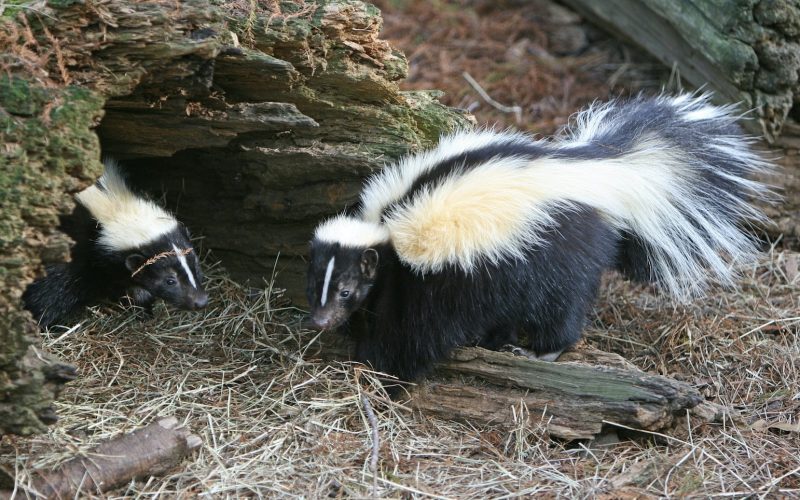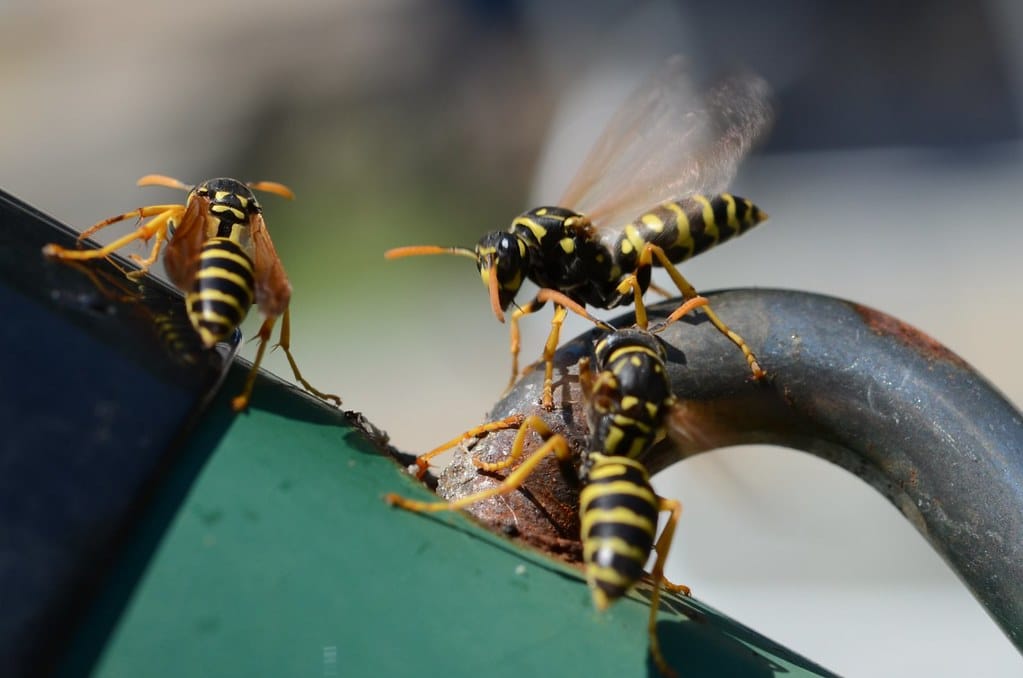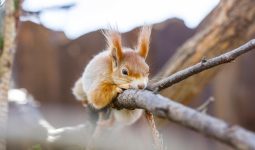There are various types of animals that dig holes in yards, and often, people consider them to be pests that need to be removed.
However, it’s crucial to remember that digging and burrowing animals are essential for healthy soil and a balanced environment.
Learning about backyard wildlife is always intriguing since it’s a terrific opportunity to appreciate your local ecology without leaving the comfort of your own house.
Small or sometimes bigger holes may be seen as you walk over your grass, particularly towards the yard’s edge.
This article provides information on the typical animals that dig holes in your yard and how to deal with them when they do.
1. Pocket Gophers
Moles and pocket gopher infestations are often confused; therefore, telling them apart is crucial.
Due to their decreasing habitats, Pocket Gophers are a species of conservation concern; thus, only measures to lessen or discourage their presence in your yard should be considered.
Unlike the Mole, the Pocket Gopher is a pure herbivore and will typically eat any roots or bulbs it comes across when digging.
Although tunneling may happen at any time of the year, it seems to happen more often in the spring and autumn.
Additionally, you may see them munching on leaves and stems along borders like walkways or the edge of a yard.
The tunnels may be recognized by their sizable dirt mounds that are fan- or crescent-shaped and have an entry and exit hole filled with dirt.
This suggests the existence of complicated underground tunnels that might improve soil irrigation while reducing runoff from the surface.
2. Skunks
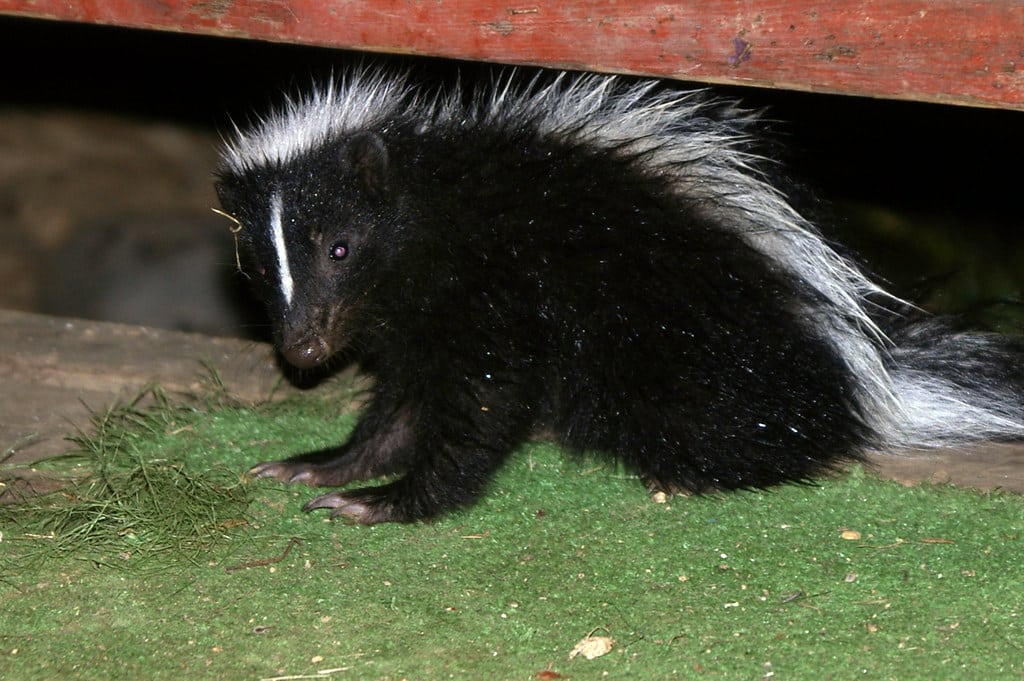
In yards around the United States, skunks are often the culprit. Skunks mark their territory by emitting a distinctive musky odor, so if you have any, you’ll most likely know it.
They have a poor reputation for this odor; however, they can only spray once every ten days actively, and hydrogen peroxide will effectively eliminate the scent.
Skunks often destroy lawns to find insect larvae, and they accomplish this by “rolling” the sod to get beneath in a highly recognizable manner.
Using pesticides, eradicate the white grubs in the soil as the first step in getting rid of skunks. As no food is available, the skunks will likely depart your property afterward.
Skunks are among the animals that dig holes that should be deliberately kept off your porch or patio, as this will help prevent them from making a home there.
Installing a hardware-cloth fence underneath the deck and burying it at least a foot underground would deter trespassers.
3. Digger Bees
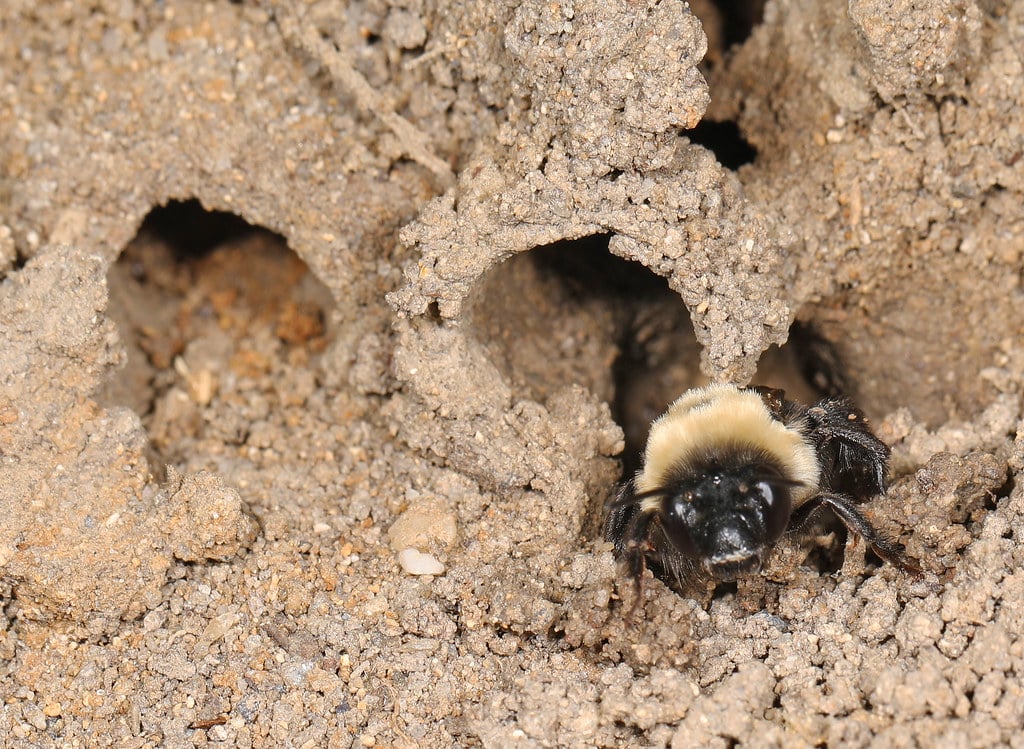
Andrenid, halictid, and colletid bees are a few examples of the varied group of little hairy or metallic bees that nest in the ground. They are significant natural pollinators and solitary bees.
In contrast to the highly sociable honeybees, where only the queen reproduces, the female excavates a cylindrical underground tube that serves as a nest where she reproduces.
The female gathers nectar and pollen from nearby blooming plants, creating ” bee-bread ” from the mixture.
They play a crucial function as pollinators in their ecology; hence, coexistence is strongly promoted wherever feasible rather than eliminated.
Digger bees are much less harmful than they are thought to be, and the fear of getting stung by one is greatly exaggerated.
Unless the bees nest very near to human activities where they are more likely to be disturbed, control is often not essential.
4. Moles
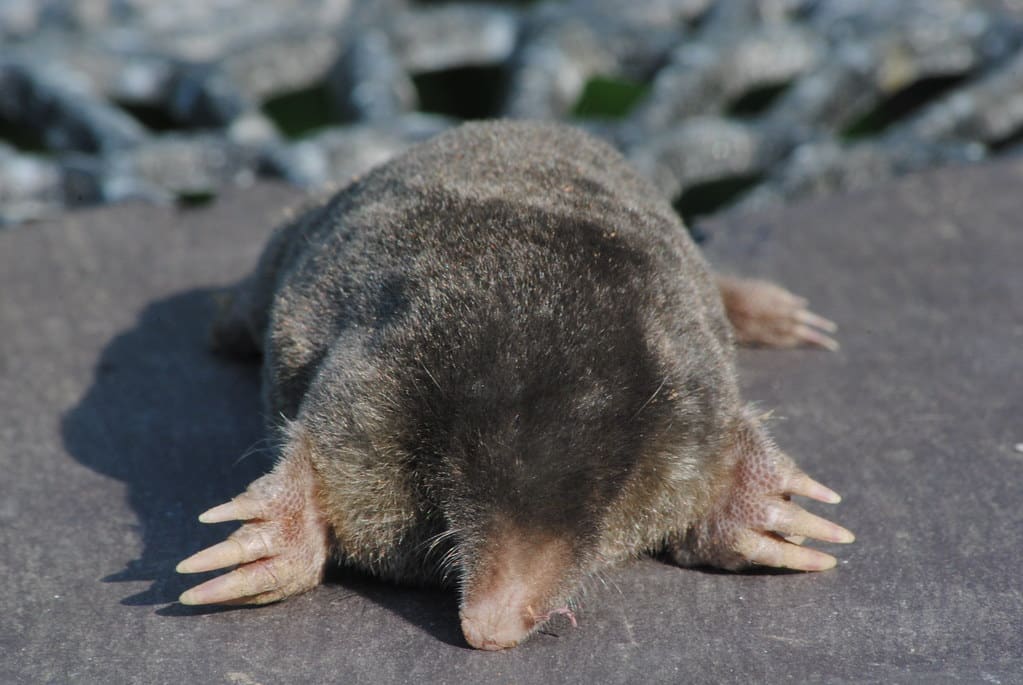
As a hungry digger, if a mole invades a garden, it may quickly wreak significant damage.
Inappropriate soil, a single mole may dig up to 18 feet of the tunnel each hour, which can seriously erode the surface of lawns and harm roots.
Look for elevated ridges of dirt running through the grass, often in the shady areas of the lawn, and volcano-shaped mounds of earth that are pushed up from deep below the soil surface with no entry.
Before eradicating moles from your property, please consider their benefits to soil aeration, fertilization, and free pest management for the white grubs that also damage lawns.
Moles are among the animals that dig holes and are also incredibly adaptable, so it’s possible that when one is removed, another one may appear, requiring a continuous removal process.
5. Voles
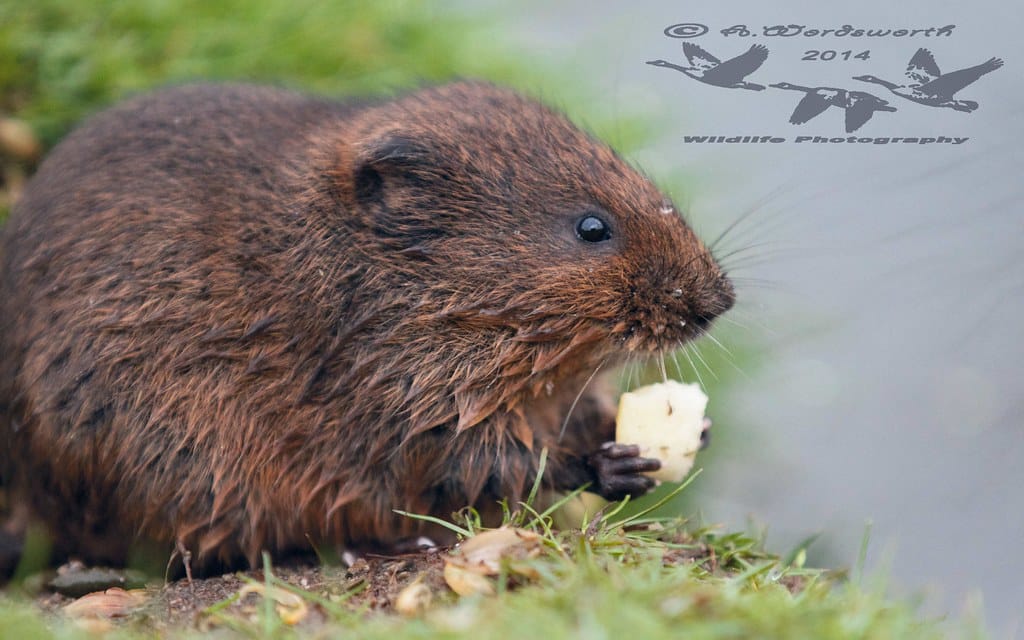
Voles dig tunnels to remain warm throughout the Winter, filling them with grasses from the previous autumn to act as insulation and a barrier against predators.
They harvest and store seeds, tubers, and bulbs to prepare for winter in late summer and early autumn.
Once the snow and frost cover has melted in the early spring, vole evidence becomes more apparent.
In the top 2-3 inches of the soil of the lawn, voles leave behind runways. They have a 1-2-inch diameter and often contain mouse feces.
Regular mowing may help minimize the amount of cover that voles have, but this is only really advised in places where a lot of them are actively creating problems.
Since they provide food for many foxes, birds of prey, and other predators, and vole numbers fluctuate from season to season; they are an essential ecological component.
6. Earthworms
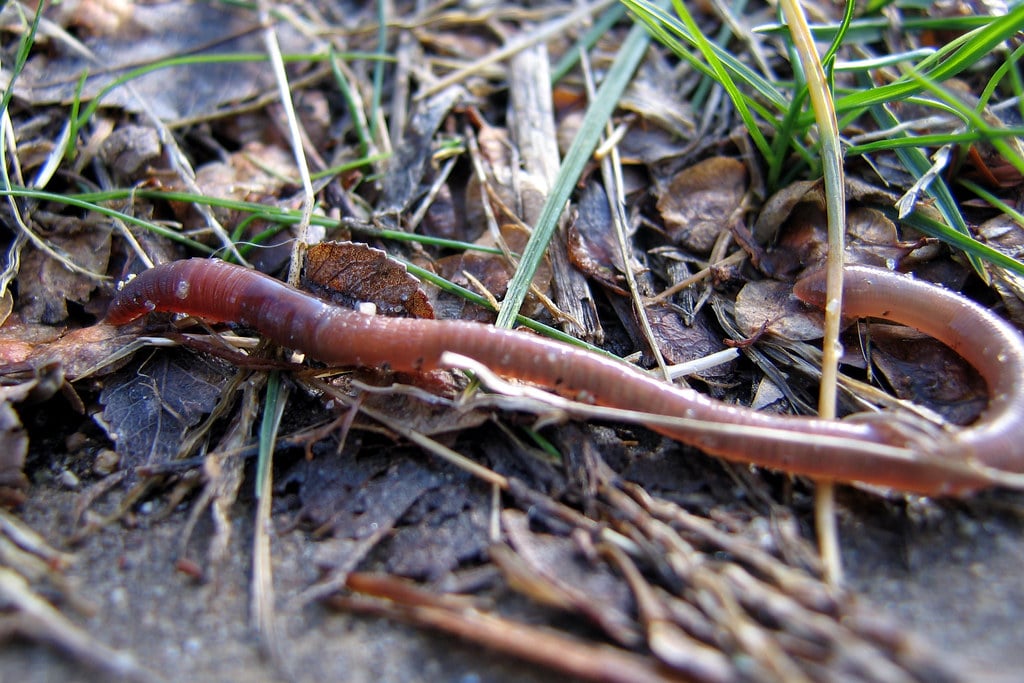
The earthworm, like the majority of lawn animals, is vital to the yard’s general health and well-being.
Their burrowing action enhances the soil by enhancing air and water flow and aiding in the breakdown of thatch. They serve as a vital food source for several birds and burrowing animals.
Although earthworms certainly contribute to a lawn that is uneven and unattractive, this problem is readily fixed by reseeding your lawn with a native species that is more appropriate for the location.
This may be exacerbated by appropriate irrigation, mowing, and fertilization to produce lush grass, which is only made possible by the common earthworm.
7. Wasps
Wasps have a poor reputation despite contributing to the ecosystem in many ways; nests located out of sight should be left alone.
Solitary wasps that dig have the potential to sting, even when they are near human activity, but they won’t do so until touched or threatened.
The severity of wasp stings varies from person to person, but they are generally not very painful.
However, removal is necessary if a nest is situated in a problematic area where it is often disturbed, such as under a deck or near a frequently used door.
Solitary wasps are very beneficial in reducing the number of spiders, cicadas, and other insects.
They primarily use their stingers to paralyze prey so they may store them in their burrows for the sake of their young.
The insects lay one egg before the female plugs the opening and closes it, never to be seen again.
The wasps’ larvae eat the stunned insects and grow into wasps that emerge in the summer. This is one of the animals that dig holes in your yard.
8. Raccoons

Raccoons are omnivores, which explains why they do well among people. They often may be seen digging up insects in yards, eating fruits from gardens, and rummaging through dumpster trash.
Raccoons have a lot of benefits over other animals that might harm your grass, such as controlling pests, even though they can become a regular nuisance in many neighborhoods.
When dealing with raccoons, prevention is vital. Take steps like sealing trash can tops and cutting down tree branches near the roof and chimney since these are typical locations where raccoons prefer to nest and raise their young.
If you have raccoons in your yard, try to capture them alive and release them or hire a professional since humans are the main cause of raccoon deaths.
9. Groundhogs
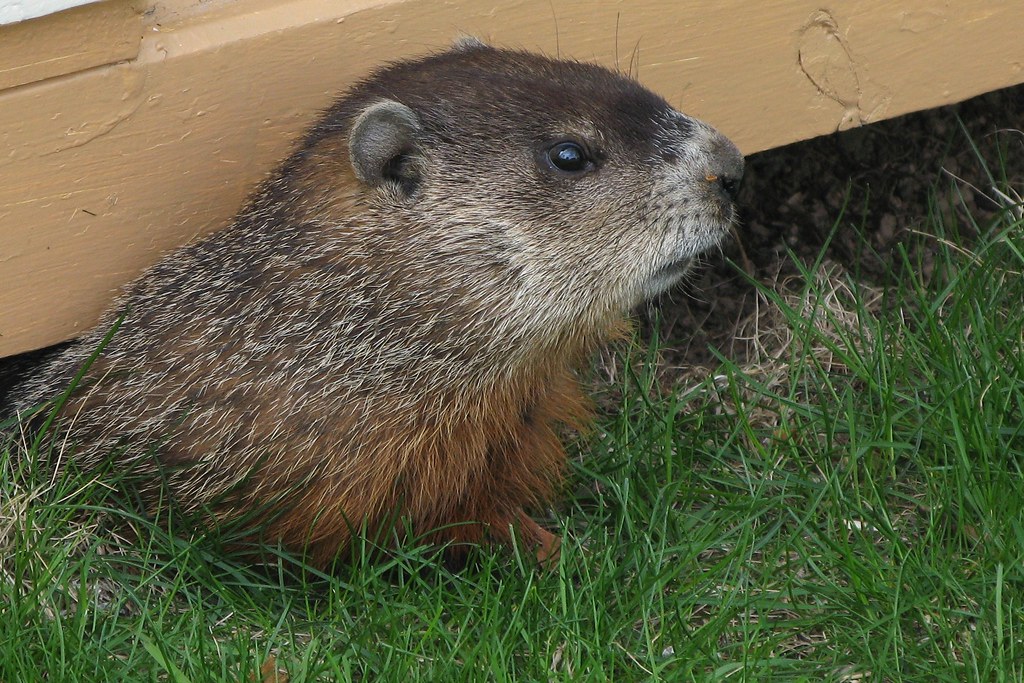
Others refer to them as woodchucks. They are one of the animals that dig holes while hunting for shelter.
Groundhogs like to burrow in secret places such as behind decks, yard borders, and homes with crawl spaces.
To get food, woodchucks also create holes in yards. As a result, it’s usual to observe them searching for greens, fruits, or seeds near storage sheds, vegetable gardens, or yard areas with more vegetation.
The greatest groundhog control measure is to erect fences to keep the animals off the land. They rarely travel through underground tunnels, in contrast to other pests.




